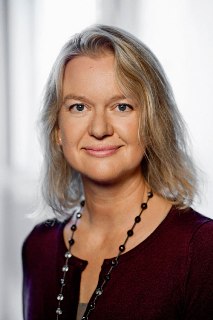Jan 8 2015
Traditional cancer treatments like radiotherapy and chemotherapy have significant side effects, as they not only affect the cancer tumours, but also the healthy parts of the body. A major new research project will work to develop a treatment that only affects the tumours locally.
 Lene Oddershede, head of the research group, Optical Tweezers at the Niels Bohr Institute has received a grant of 14.5 million kroner from the Novo Nordisk Foundation for an interdisciplinary cancer therapy project between physicists, doctors and chemists. (Photo: Lars Svankjær)
Lene Oddershede, head of the research group, Optical Tweezers at the Niels Bohr Institute has received a grant of 14.5 million kroner from the Novo Nordisk Foundation for an interdisciplinary cancer therapy project between physicists, doctors and chemists. (Photo: Lars Svankjær)
The treatment involves injecting tiny nanoparticles into the tumour, where they are irradiated and destroy the cancer from within. The project has received a grant of 14.5 million kroner from the Novo Nordisk Foundation. It is an interdisciplinary research project between physicists, doctors and chemists. The project is being led by the biophysicist Lene Oddershede, head of the research group, Optical Tweezers at the Niels Bohr Institute.
The project is called Laser activated nanoparticles for tumor elimination (LANTERN). It is an interdisciplinary project between physicists at the Niels Bohr Institute, doctors at the Copenhagen University Hospital and the Panum Institute along with chemists at Rice University in Houston, USA. The project is led by Lene Oddershede, who is a biophysicist and head of the research group, Optical Tweezers at the Niels Bohr Institute at the University of Copenhagen.
Local therapy
“The project involves spraying tiny nanoparticles directly into the tumour or into the bloodstream, where they will eventually end up in the tumour. Then you shoot the beads with a laser. There is a strong interaction between the nanoparticles and the laser light, which is dependent on the structure of the particle, its physical size and the wavelength of the light. The right combination causes the particles to heat up. Part of what happens is that the heated particles melt the cell membranes, thus dissolving the cancer cells and then the particles are coated with chemotherapy, which is released by the heat and also helps to kill the cancer cells,” explains Lene Oddershede.
Much of the research will involve designing just right nanoparticles. This will take place at En del Rice University in Houston, where they have great expertise in this field. The small nanoparticles are between 60 and 200 nanometers in diameter (a nanometer is millionth of a millimeter). The particles have a complex structure made up of gold and silica and part of the research will involve figuring out which particles are the best to use.
The surface of the particles is coated with toxins that are firmly fixed so that they are only released when the particle in the tumour is hit by the laser beam and is warmed up. This means that the chemotherapy is only released locally in the cancer cells.
Interdisciplinary collaboration
“Here at the Niels Bohr Institute we will carry out experiments where we test various nanoparticles and laser light in cell cultures to identify the most suitable nanoparticles. As physicists we have great expertise in the interaction between light and nanoparticles and we can measure the temperature of the heated nanoparticles with great precision,” explains Lene Oddershede.
Experiments with living mice will conducted at the Copenhagen University Hospital and it will be possible to follow the effect of the treatment almost instantaneously in the PET scanner.
“The strength of the interdisciplinary collaboration is that as physicists we know a lot about the interaction between light and nanoparticles, but we don’t know anything about the body. However, the doctors know much more about the human body and scanning methods and thus the collaboration has a very strong synergy effect,” says Lene Oddershede, who also stresses that the goal is to develop a method that is effective at killing cancer cells, but will also be very gentle, as the treatment is only local.
The grant of 14.5 million kroner from the Novo Nordisk Foundation is for three years and will mean five new positions between the involved parties.